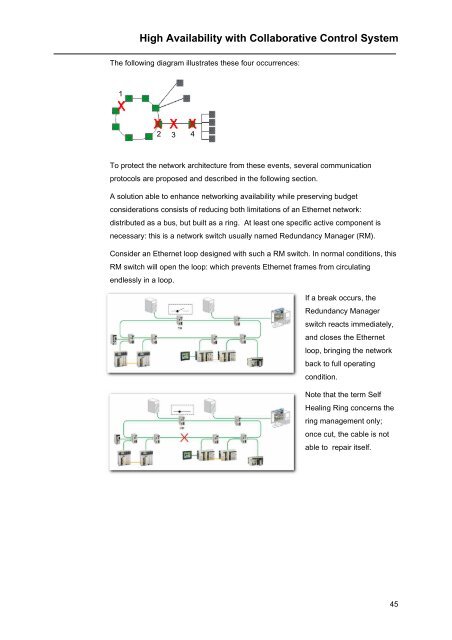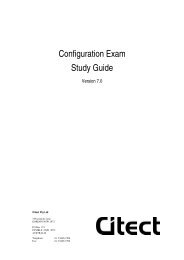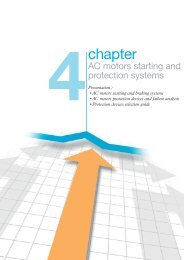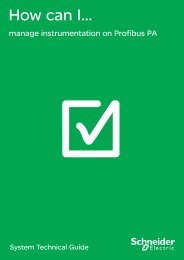High Availability Theoretical Basics - Schneider Electric
High Availability Theoretical Basics - Schneider Electric
High Availability Theoretical Basics - Schneider Electric
You also want an ePaper? Increase the reach of your titles
YUMPU automatically turns print PDFs into web optimized ePapers that Google loves.
<strong>High</strong> <strong>Availability</strong> with Collaborative Control System<br />
The following diagram illustrates these four occurrences:<br />
1<br />
2<br />
To protect the network architecture from these events, several communication<br />
protocols are proposed and described in the following section.<br />
A solution able to enhance networking availability while preserving budget<br />
considerations consists of reducing both limitations of an Ethernet network:<br />
distributed as a bus, but built as a ring. At least one specific active component is<br />
necessary: this is a network switch usually named Redundancy Manager (RM).<br />
Consider an Ethernet loop designed with such a RM switch. In normal conditions, this<br />
RM switch will open the loop: which prevents Ethernet frames from circulating<br />
endlessly in a loop.<br />
3<br />
4<br />
If a break occurs, the<br />
Redundancy Manager<br />
switch reacts immediately,<br />
and closes the Ethernet<br />
loop, bringing the network<br />
back to full operating<br />
condition.<br />
Note that the term Self<br />
Healing Ring concerns the<br />
ring management only;<br />
once cut, the cable is not<br />
able to repair itself.<br />
45

















